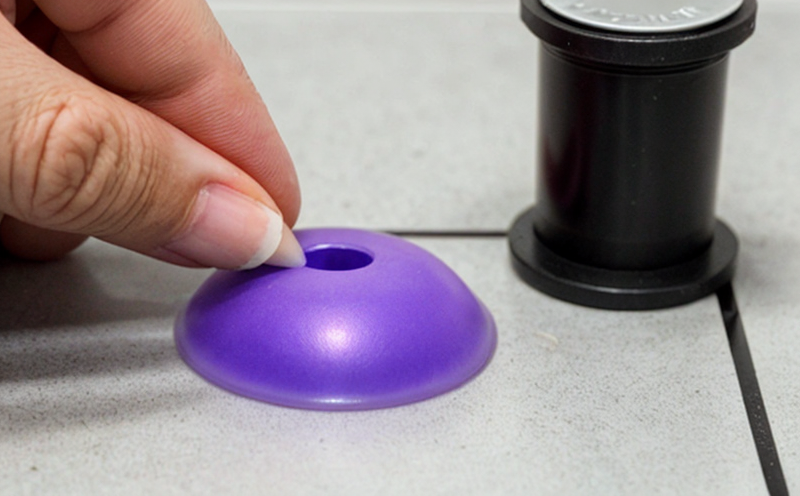EN 15308 Surface Characterization of Waste Materials
The European Standard EN 15308 provides a method for determining the surface area and porosity characteristics of waste materials using gas adsorption techniques. This standard is essential in ensuring accurate measurement, which can influence various aspects such as recycling, environmental impact assessment, and material utilization.
This service focuses on the characterization of nanomaterials within waste streams by quantifying their specific surface area. Understanding this parameter helps in assessing the reactivity and potential for hazardous interactions during processing or disposal. The method described in EN 15308 is widely recognized for its precision and reliability, making it a cornerstone in the field of solid waste management.
The procedure involves the use of nitrogen adsorption at liquid nitrogen temperature (77 K) to determine the specific surface area according to the BET (Brunauer-Emmett-Teller) theory. Prior to testing, samples must be prepared carefully to ensure uniformity and representativeness. This includes grinding particles down to a consistent size range suitable for adsorption analysis.
The process begins with sample pretreatment to remove any adherent contaminants that could interfere with the test results. Once cleaned, the samples are weighed accurately before being loaded into the instrument chamber. The instrument then measures how much nitrogen gas is adsorbed at various pressures, from which the specific surface area can be calculated.
Specific surface area plays a crucial role in determining the efficiency of waste materials for recycling or reuse applications. For instance, higher surface areas often indicate greater reactivity and potential for effective resource recovery. This information is vital for industries dealing with post-consumer plastics, metals, and other mixed waste streams.
EN 15308 ensures that the results are comparable across different laboratories, which is critical when regulatory bodies or international consortia require standardized data. The standard's precision allows for consistent evaluation of waste materials, aiding in informed decision-making regarding their management and utilization.
In summary, EN 15308 provides a robust framework for quantifying the surface area of waste materials, which is indispensable for optimizing resource recovery processes and minimizing environmental impacts. By accurately characterizing nanomaterials within waste streams, this service supports sustainable practices in manufacturing and recycling sectors.
- Compliance with EN 15308 ensures accurate and consistent surface area measurements across different laboratories.
- The method allows for the quantification of specific surface areas down to nanoscale levels, crucial for evaluating reactivity in waste materials.
- Precision is key when dealing with mixed waste streams, enabling effective resource recovery and reducing environmental impact.
Benefits
Accurate surface area characterization of waste materials through EN 15308 offers several significant benefits. Firstly, it enhances the reliability of data used in decision-making processes related to waste management and recycling. Reliable data is crucial for optimizing resource recovery operations and ensuring compliance with environmental regulations.
Secondly, this service supports sustainable practices by enabling efficient utilization of waste materials. By quantifying specific surface areas, industries can identify suitable applications for various types of waste, thereby reducing the volume sent to landfills. This not only minimizes landfill space but also decreases greenhouse gas emissions associated with waste decomposition.
Thirdly, the precision provided by EN 15308 aids in assessing the reactivity and potential hazards of nanomaterials within waste streams. This information is vital for ensuring safe handling and processing, reducing risks to human health and the environment.
Fourthly, compliance with international standards like EN 15308 enhances an organization's reputation by demonstrating a commitment to quality and environmental responsibility. It also facilitates easier entry into global markets where such standards are mandatory or preferred.
Fifthly, this service supports research and development efforts aimed at improving waste management technologies. Accurate surface area data can lead to innovations in recycling processes and the creation of new products from recycled materials.
Sixthly, it provides a clear pathway for compliance with regulatory requirements set by governments and international bodies. This ensures that organizations remain up-to-date with evolving standards and practices in waste management.
International Acceptance and Recognition
- EN 15308 is widely recognized across Europe as a standard for surface characterization of solid waste materials. Its acceptance extends beyond national borders, making it an international reference in the field.
- The standard is frequently used by organizations involved in environmental impact assessments and recycling initiatives worldwide.
- Its precision has been validated through numerous studies and applications, ensuring its reliability as a measurement tool.
- Adherence to EN 15308 enhances an organization's credibility in both domestic and international markets.
Environmental and Sustainability Contributions
The characterization of waste materials using EN 15308 significantly contributes to environmental sustainability by promoting efficient resource recovery. By accurately quantifying the specific surface area, industries can optimize recycling processes, thereby reducing reliance on virgin raw materials.
This service also plays a crucial role in minimizing landfill volumes and associated environmental impacts. The precise measurements provided by EN 15308 enable better sorting of waste streams, ensuring that only those materials with the highest potential for reuse are processed further. This reduces the overall carbon footprint associated with waste management.
In addition, understanding the reactivity of nanomaterials within waste allows for safer handling and processing practices. By identifying hazardous components early in the recycling process, this service helps prevent accidents that could harm both workers and the environment.
Furthermore, compliance with international standards like EN 15308 fosters a culture of environmental responsibility among organizations. It encourages continuous improvement in waste management practices and supports the development of new technologies aimed at enhancing sustainability.





